FinalExam_Solution
advertisement
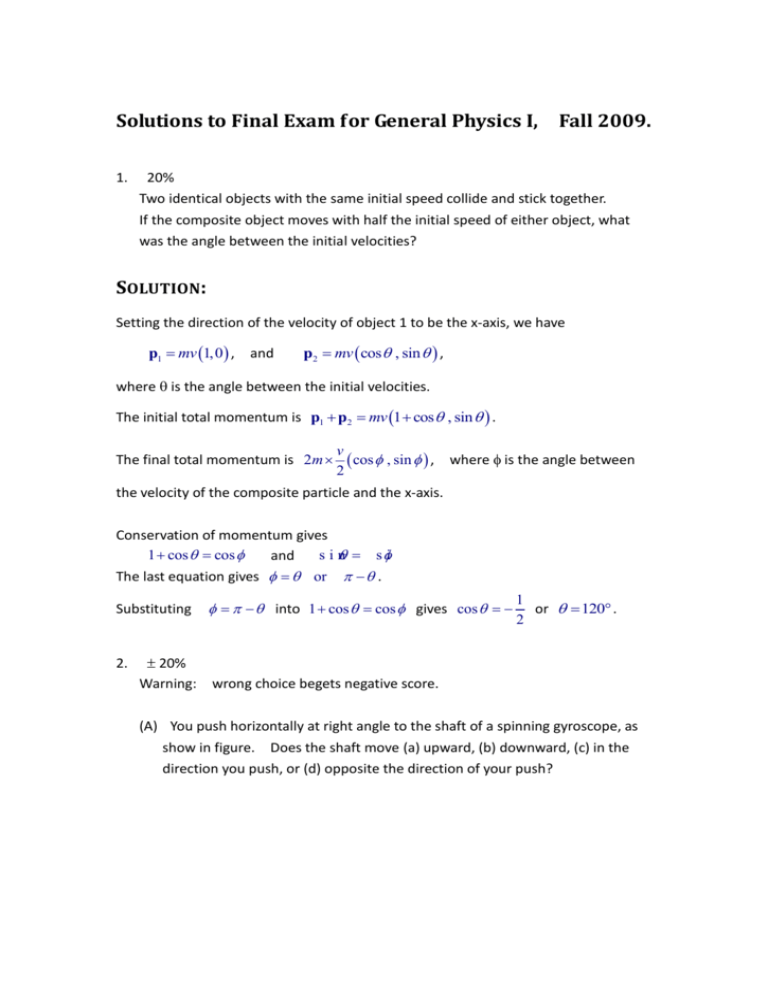
Solutions to Final Exam for General Physics I, 1. Fall 2009. 20% Two identical objects with the same initial speed collide and stick together. If the composite object moves with half the initial speed of either object, what was the angle between the initial velocities? SOLUTION: Setting the direction of the velocity of object 1 to be the x-axis, we have p1 mv 1,0 , and p2 mv cos , sin , where is the angle between the initial velocities. The initial total momentum is p1 p2 mv 1 cos , sin . The final total momentum is 2m v cos , sin , 2 where is the angle between the velocity of the composite particle and the x-axis. Conservation of momentum gives 1 cos cos s i n s i n and The last equation gives or . Substituting 2. 20% Warning: into 1 cos cos gives cos 1 or 120 . 2 wrong choice begets negative score. (A) You push horizontally at right angle to the shaft of a spinning gyroscope, as show in figure. Does the shaft move (a) upward, (b) downward, (c) in the direction you push, or (d) opposite the direction of your push? (B) If left alone, in what direction will the gyroscope precess? (a) Clockwise (b) Counterclockwise about the upward vertical axis. SOLUTION: (A) (a). The push creates a downward torque . L goes down, gyroscope goes up. L L+t (B) (a). Gravity produces a horizontal torque pointing out of the paper. L thus moves out of the paper so that its precession is clockwise about the vertical z-axis. z L 3. 20% A rectangular block twice as high as it is wide is resting on a board. Let the coefficient of static friction between the block and the board be . Find the critical value of at which the block is equally likely to tip over or begin sliding as the tilt of the board increases (see figure). SOLUTION: The block begins to slide if m g sin m g cos , It begins to tip over if , i.e., tan tan The critical value of is therefore c 1 . 2 i.e., 1 . 2 tan . 4. 20% A thin, uniform hoop of mass M and radius R is suspended from a thin horizontal rod and set oscillating with same amplitude, as show in figure below. Find the period of oscillation. Hint: Use the parallel-axis theorem. SOLUTION: The rotational inertia of the hoop about an axis through its center and perpendicular to its plane is I 0 M R 2 . If we move the axis to a point at its circumference, the rotational inertia becomes I I 0 MR 2 2MR 2 , according to the parallel-axis theorem. For small amplitudes, the angular frequency of the physical pendulum is M gR I g , 2R which corresponds to a period of T 2 5. 2R . g 20% A supersonic plane flies directly over you at speed Mach 2. You hear its sonic boom 20s later. What is the plane’s altitude, assuming the speed of sound to be 340 m/s ? SOLUTION: ut h The Mach angle is given by sin 1 so that 30 . 2 When the shock wave hits you, the plane has already traveled a distance u t. The altitude of plane is therefore 1 h u t tan 2 340 m / s 20 s tan 30 13.6 km 7.85 km . 3

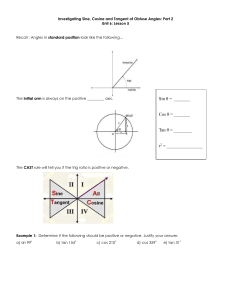


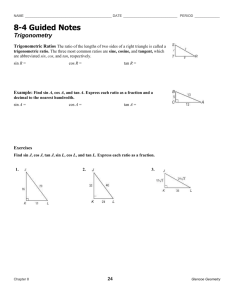


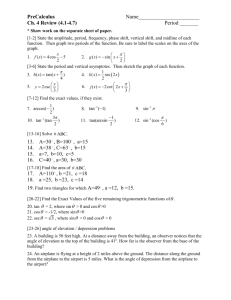

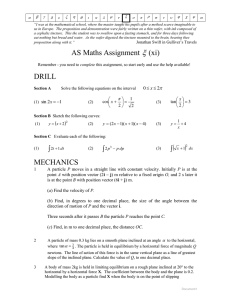
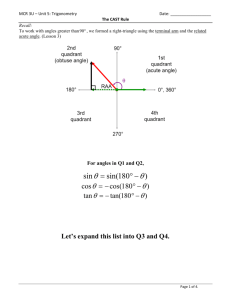
![Chapter 3 STWAVE final report [wp5]](http://s3.studylib.net/store/data/007899153_2-0ab08080b09fc00670937bc90f955e5c-300x300.png)